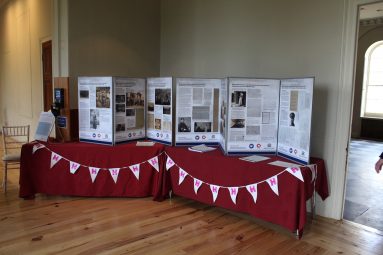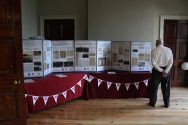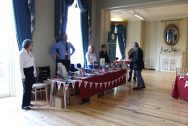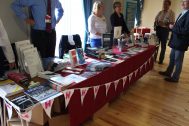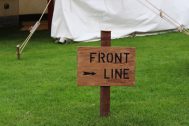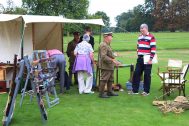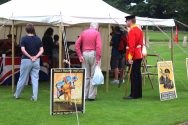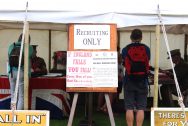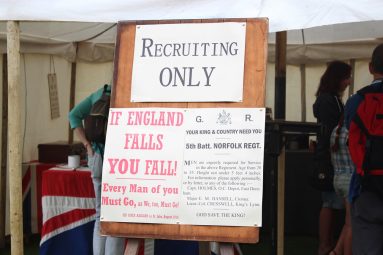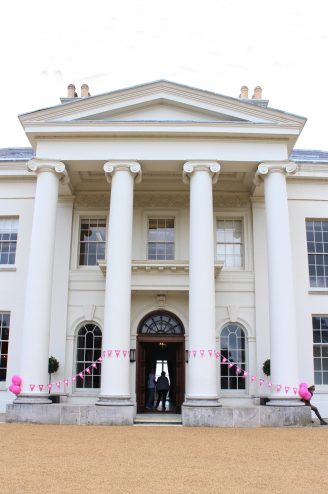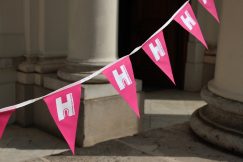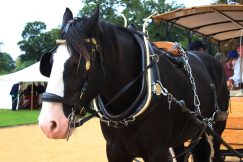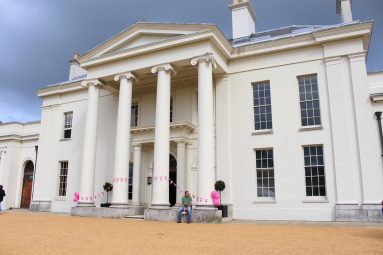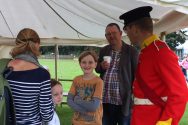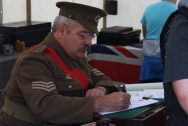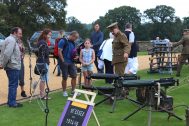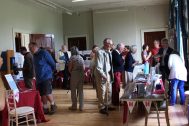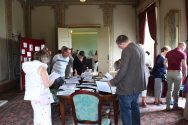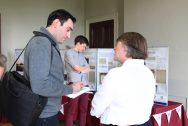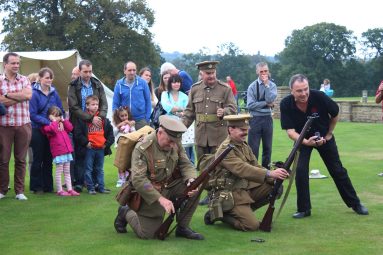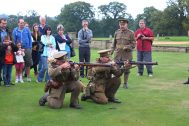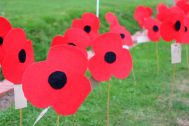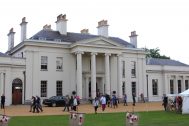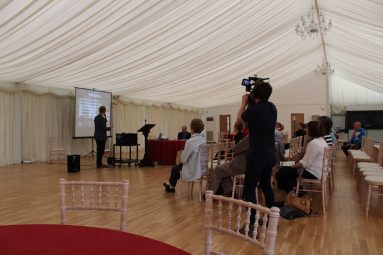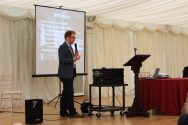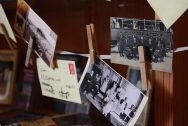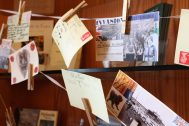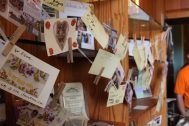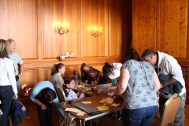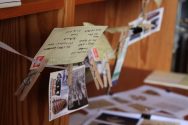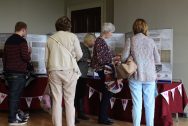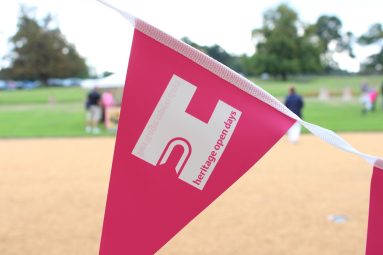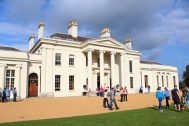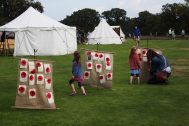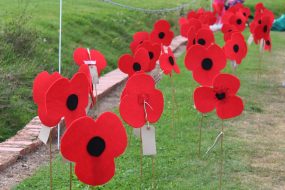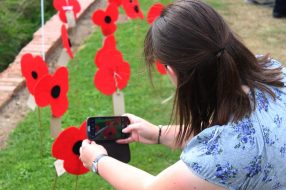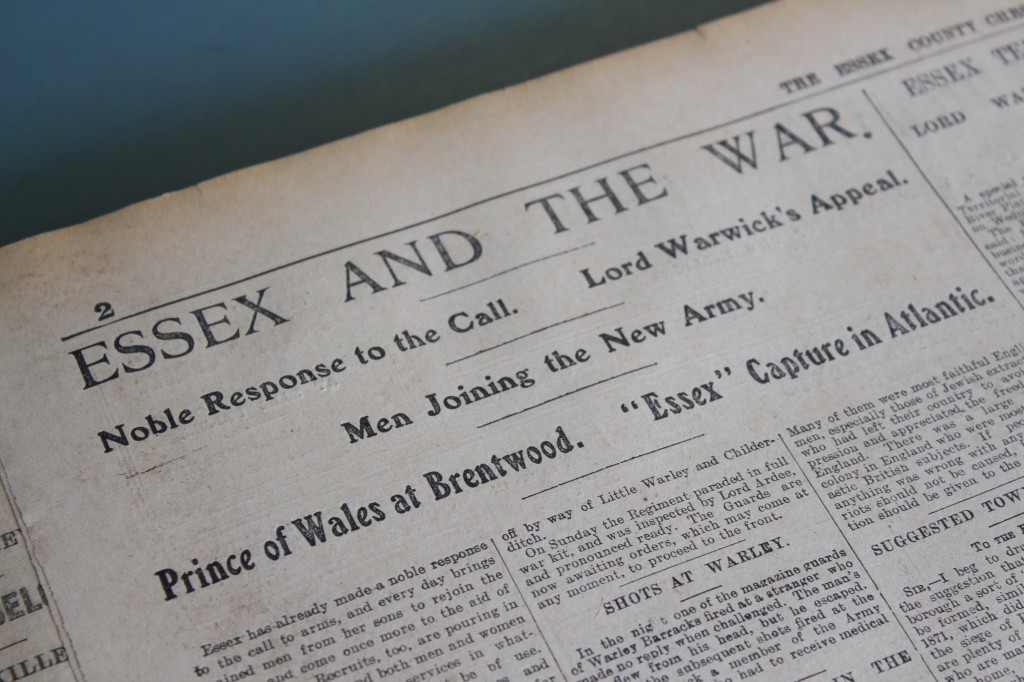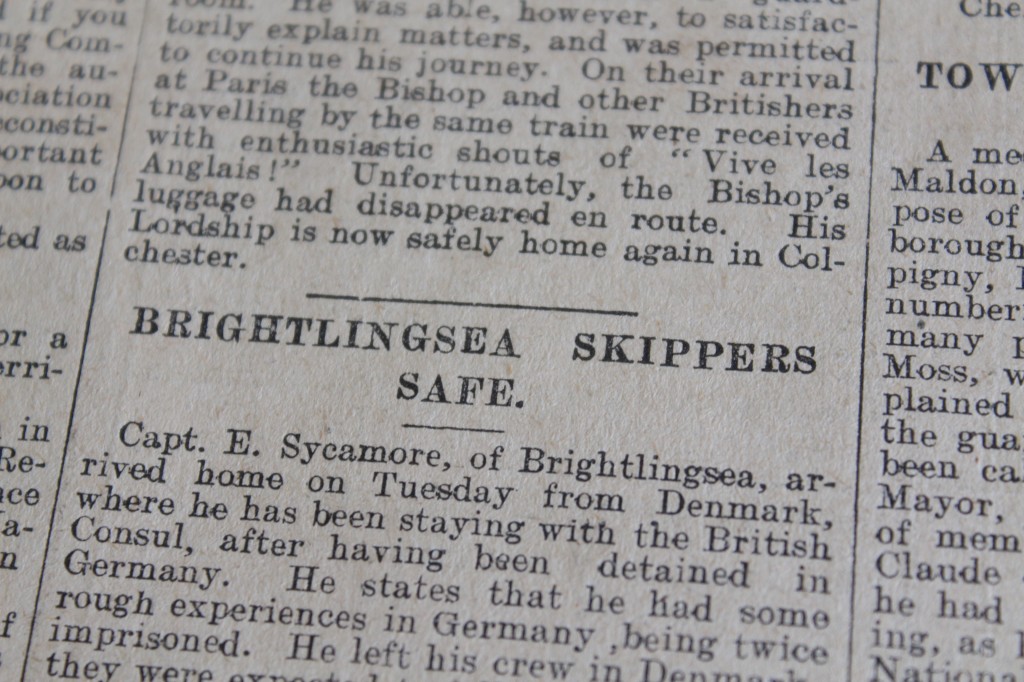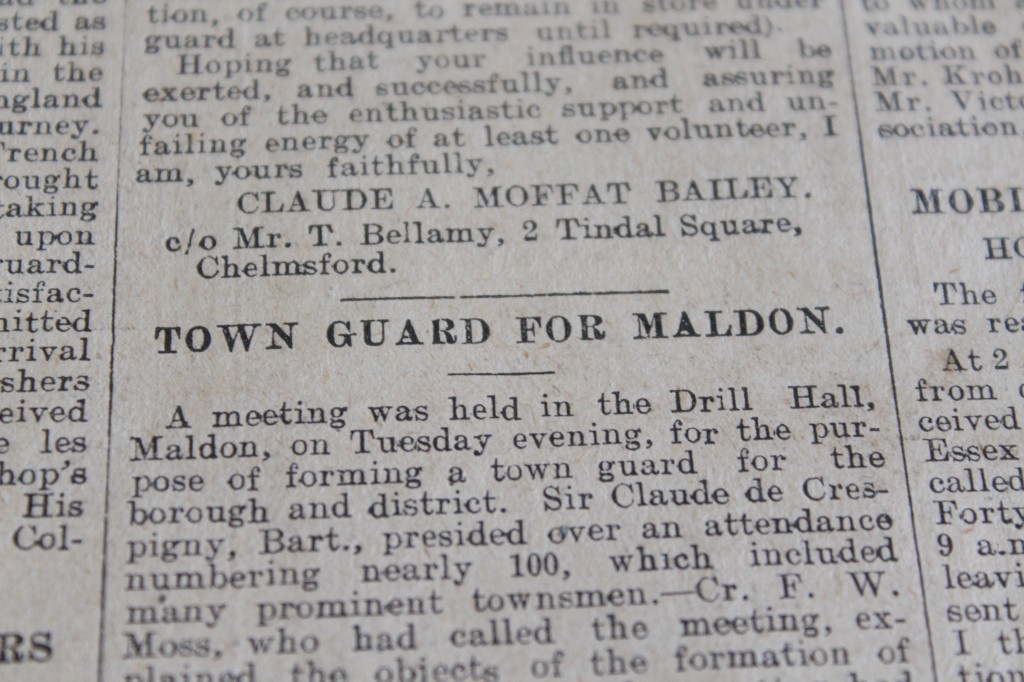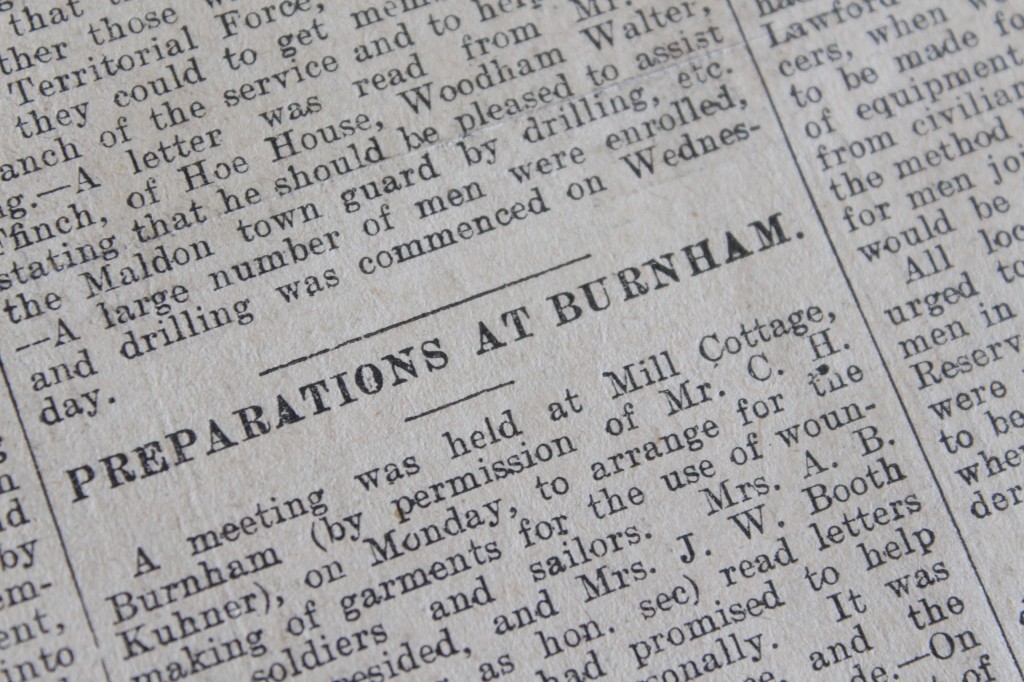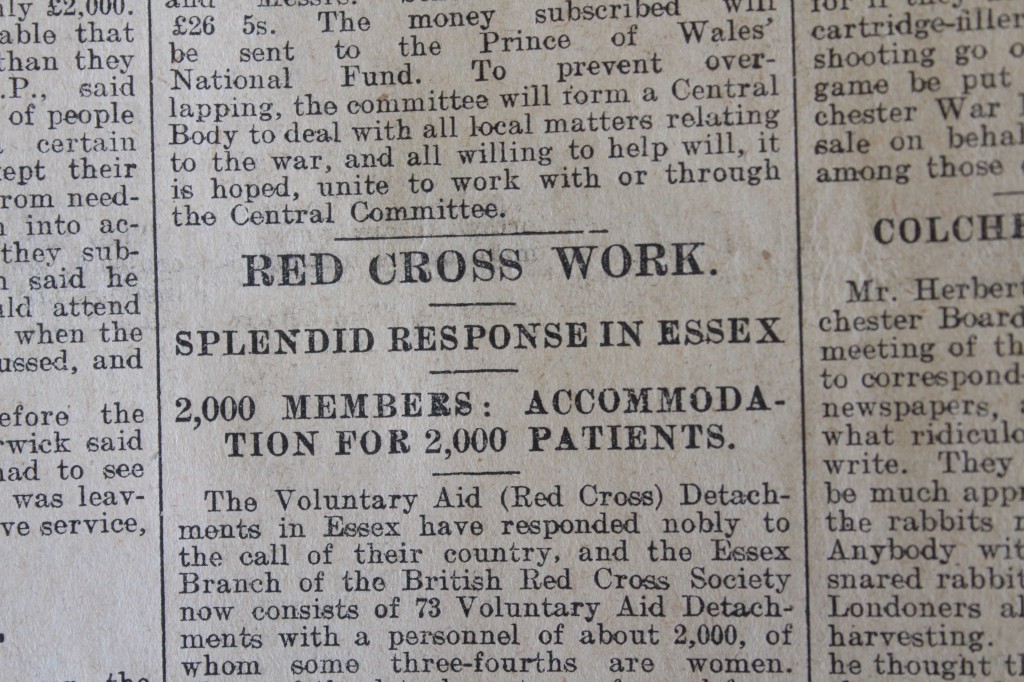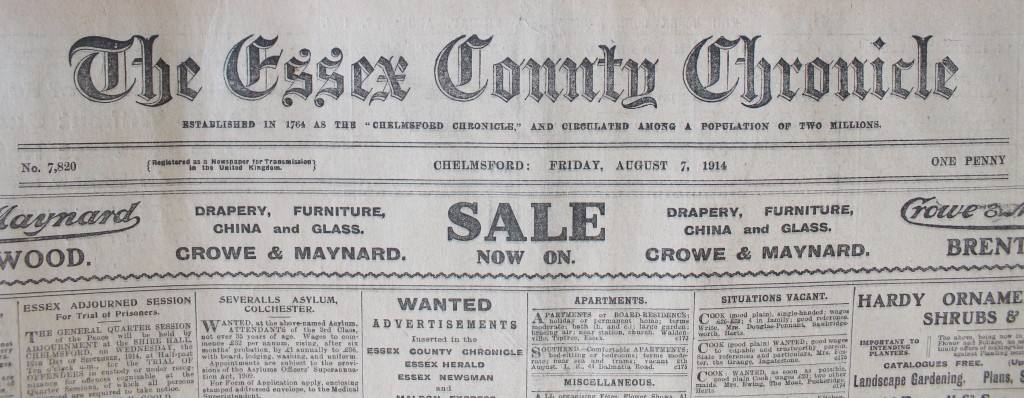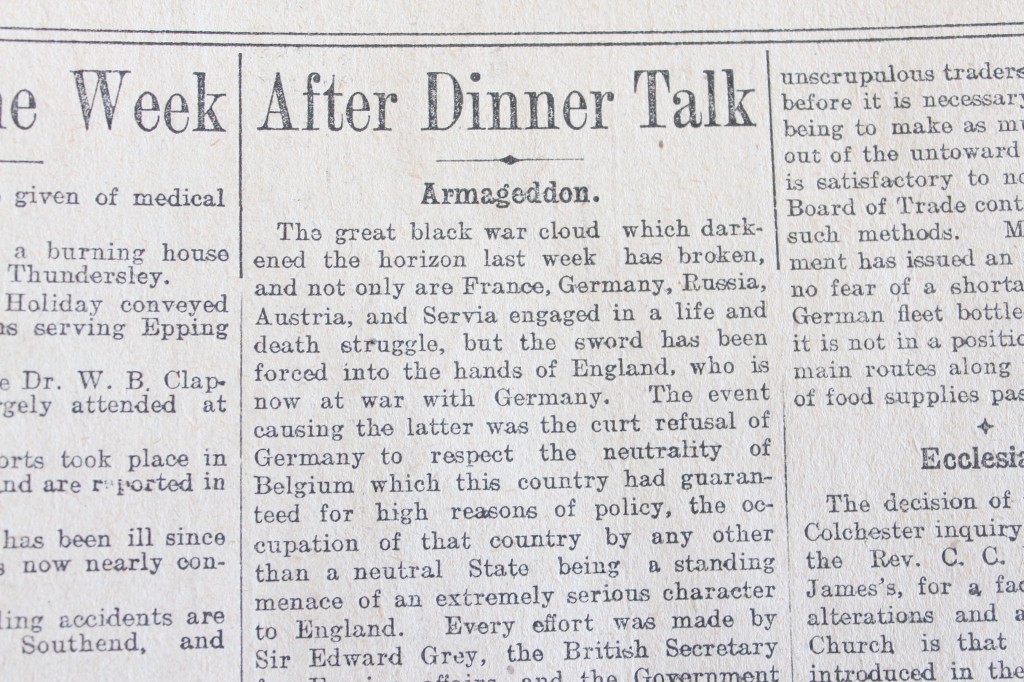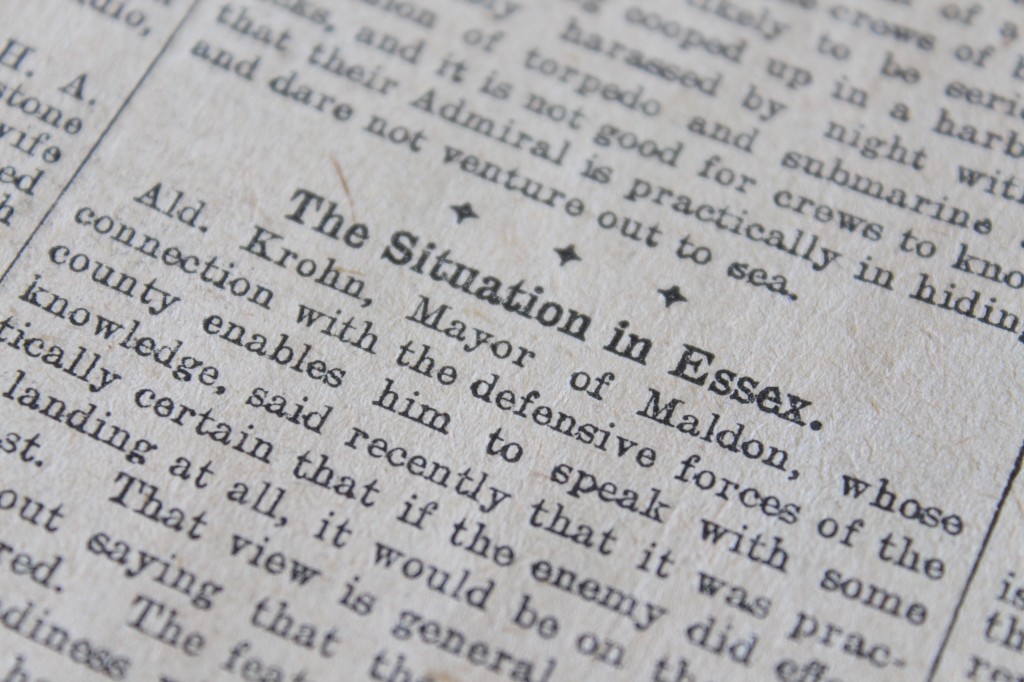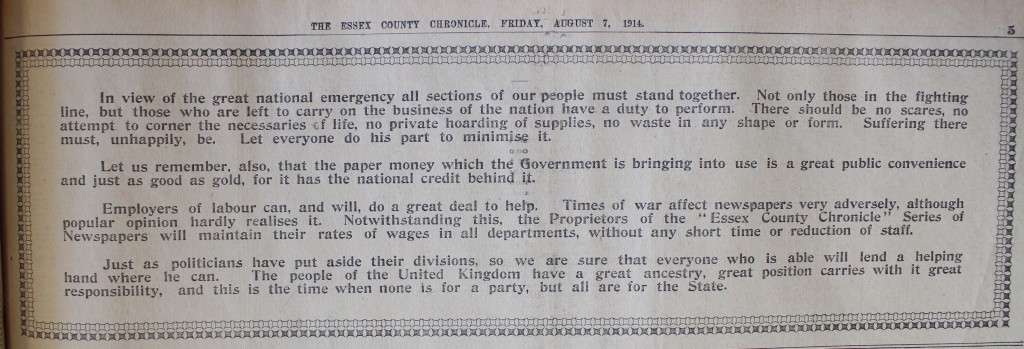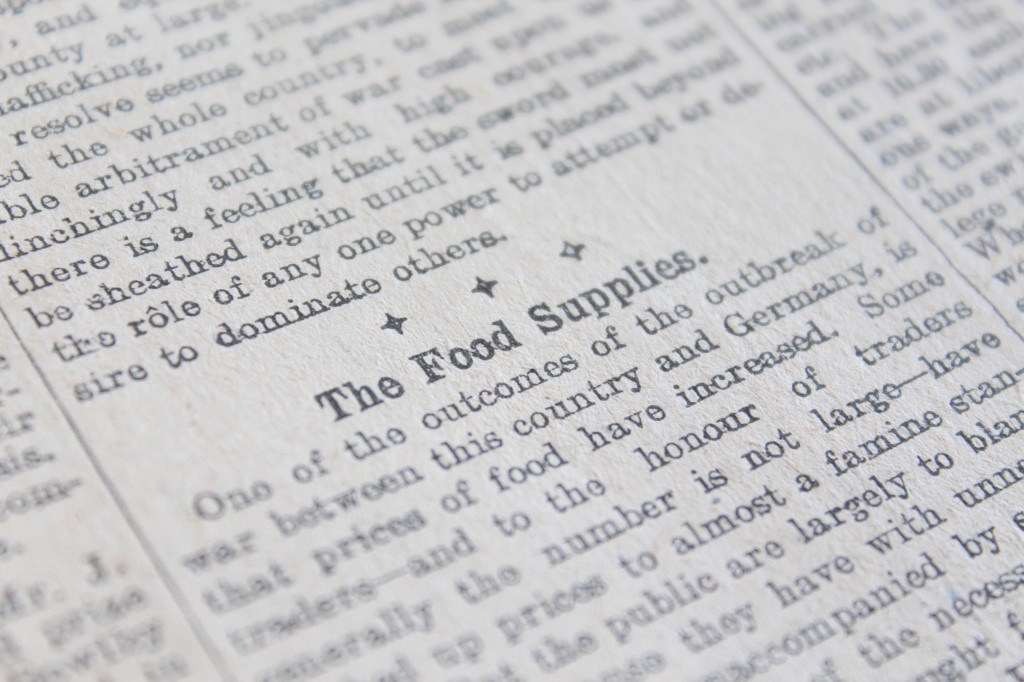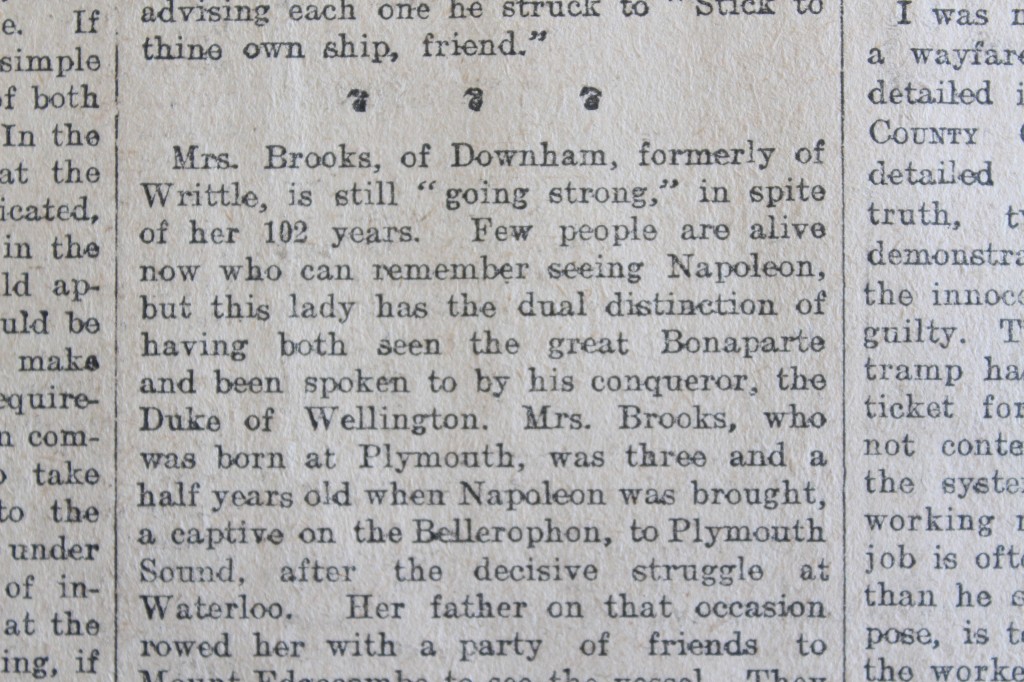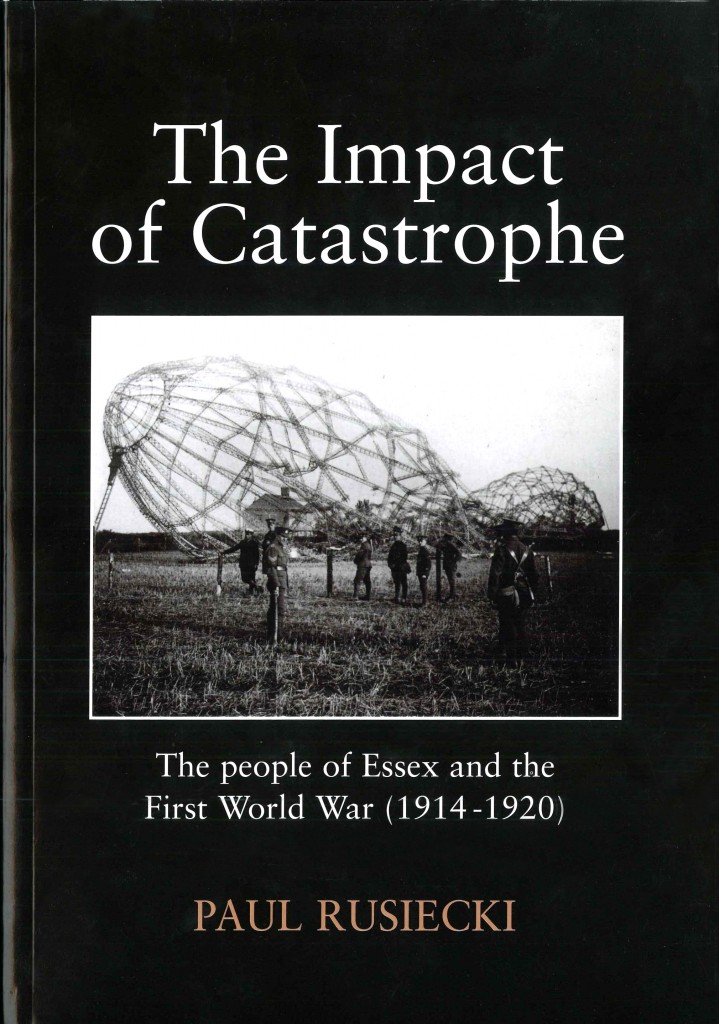I can’t believe it has finally come and gone – after 15 months in the planning, today was Essex at War at Hylands House. This was a big collaboration between ERO, Hylands House, Now the Last Poppy has Fallen, the Essex Regiment Museum, and many others. It’s always great to take the ERO out on the road to new locations, and we had a wonderful day meeting so many people. We hope that if you visited you enjoyed your day!
Tag Archives: World War One
‘Noble reponse to the call’: a look at the Essex County Chronicle of 14 August 1914
Following our recent post on how the Essex County Chronicle reported on local responses to the outbreak of the First World War, today we take a look at a few of the stories published the following week on 14 August 1914.
These snippets from the Chronicle give us a bit of an insight into the sorts of things that people were talking about and doing as the world slid into chaos around them.
Joining up
The Chronicle reported that:
‘Essex has already made a noble response to the call to arms, and every day brings trained men from her sons to rejoin the colours and come once more to the aid of the Empire. Recruits, too, are pouring in at all the offices, and both men and women are volunteering their services in whatever capacity they can best be of use. There is no shirking. All classes and people of all creeds stand together’
Recruiting for Kitchener’s New Army had already begun, and it was reported that large numbers of Essex Territorials had already volunteered for it.
The Chronicle also reported on a special meeting of the Essex County Territorial Force Association that had taken place in Finsbury Circus, which was addressed by the Earl of Warwick:
‘I don’t want to depress you too much, but you all must know the terrible anxiety that must exist for a very long time to come. Two enormous armies are face to face – the largest in the history of the world. We have been brought into this conflict, peace loving people as we are, through no fault of our own. We have to try in every way to go through with it for the best interests of this glorious old country. Not only are you fighting for everything you love and cherish, for your hearths and homes, and sacrificing yourself in their interests, but you have got to remember that this war has got to be fought to a finish.’
A report on mobilisation read by the Secretary stated that the force had started to receive call ups for various sections on 30th and 31st July and that ‘in the county of Essex they had been as prompt as any other county in England. All the Territorial Battalions were now mobilised’. They had been 1100 under strength, but all vacancies had been filled.
Paranoia sets in
One story reported on 14th August suggests that parts of the county at least were on edge, and a tragedy was narrowly averted at Warley Barracks:
‘In the night one of the magazine guards of Warley Barracks fired at a stranger who made no reply when challenged. The man’s hat flew from his head, but he escaped. One of the subsequent shots fired at the fugitive struck a member of the Army Medical Corps, who had to receive medical attention.’
A young man visiting Harwich meanwhile had filled some time by sketching on the pier: ‘He was promptly arrested by the military sentries on duty, and taken to the Redoubt. After detention for two hours he was released’. His story was presented as a warning to others.
Anti-German feeling was also quick to set in amongst some people, as is shown in this story from a hearing in Stratford:
‘At Stratford on Saturday, in binding over James Webster, 42, a labourer, of Buckhurst Hill, who was stated to have been engaged in an argument with an Englishman, whom he accused of being a German. Mr Ehot Howard said he hoped Englishmen would not annoy persons simply because they bore German names. Many of them were most faithful Englishmen, especially those of Jewish extraction, who had left their country to avoid oppression and appreciated the freedom of England. There was a large German colony in England who were most enthusiastic British subjects.’
Essex people trapped abroad
Some Essex residents had been in Europe when the war broke out, and some ran into trouble before they managed to make it home.
The Bishop of Colchester had been on holiday, and was arrested in France as a spy for snapping a photograph. The Chronicle reported that he was ‘pounced upon by the military and taken to a guardroom’, but after explaining managed to make it safely back to Colchester.
There had, meanwhile, been more anxiety in Brightlingsea. Several local men who had been at sea working on racing yachts had been held by the Germans. One man had returned home but others were still on the continent:
‘Capt. E. Sycamore, of Brightlingsea, arrived home on Tuesday from Denmark, where he has been staying with the British Consul, after having been detained in Germany. He states that he had some rough experiences in Germany, being twice imprisoned. He left his crew in Denmark; they were expected to follow on. Captain Sycamore arrived with nothing beyond the clothes he was wearing, all his other luggage having been taken from him while in Germany. Capt. Sycamore brought a reassuring message with regard to Captain James Taylor, of Brightlingsea, who, with his wife, is imprisoned at Hamburg.’
County defences
People had already begun to mobilise to prepare to defend their county. In Maldon, for example, a meeting had been held at the Drill Hall to form a town guard for the borough and district. The guard was for men too old to join the Territorials who wanted to play a part in defending their homes. Nearly 100 people were reported to have attended, and apparently a large number of men enrolled and began to drill almost immediately.
Unemployment and poverty
Across the county, local leaders had received telegrams from the Prince of Wales asking them to assist in the setting up of local branches of the National Relief Fund.
As mentioned in our post on August’s document of the month, unemployment and poverty were rapid consequences of the outbreak of war. Cllr Booth, Vice-Chairman of Burnham Council, said at a specially-called meeting to consider the local consequences of the war:
‘it would be necessary to form a relief committee, and that was his chief object in asking for the meeting. There was likely to be much poverty in consequence of the war, and they ought to make provision for this. He suggested that, with a view of providing employment, this would be a good time to proceed with the sewerage scheme. They were all agreed that this was necessary, and perhaps they might get assistance in carrying it out. He knew it would be expensive to borrow money at this time, but they ought to do what they could to provide employment.’
Local employment already being affected; the Mildmay Ironworks had had orders for piano frames cancelled, and the oyster trade was likely to have a bad winter. The council agreed to ask the Surveyor what useful and necessary works the Council could do to provide employment, and Mr Booth also proposed formation of a Relief Committee.
Preparations for the wounded
Local people quickly began to prepare to aid the expected numbers of wounded. In Burnham, a meeting was held at Mill Cottage to make arrange making clothes for wounded servicemen. The group who met had already received offers of help, both financial and personal. A series of first-aid lectures had also begun, and arrangements had been made to open two or three hospitals as temporary schools in the expectation that the wounded from naval engagements might be brought to the area.
There was also a report on local Red Cross work. The Essex Branch of the British Red Cross was reported to consist of 73 Voluntary Aid Detachments, with a total personnel of about 2,000, three quarters of them women.
People had also been quick to volunteer buildings to be used as hospitals:
‘Since the commencement of the war many generous offers of private houses, institutions, and other buildings for use either as hospitals or convalescent homes have been made, and in many instances steps have been taken to equip some of these buildings at short notice.’
These buildings included Easton Lodge, Dunmow, Hylands House, Widford, Birch Hall, Theydon Bois and Sewardstone Lodge, Waltham Abbey. Many schools and other public buildings had also been identified as possible hospital sites.
The Palace Hotel in Southend, for example, had already been set aside for use as a naval hospital, to be known as Queen Mary’s Royal Naval Hospital, with accommodation for at least 400 patients.
There was to be much, much more published in local papers on the war and the impact it was having locally over the coming months and years, and they make fascinating reading. If you would like to see for yourself, the ERO has some local newspapers available on microfilm, or you can visit ERO or any Essex library to use the British Newspaper Archive online for free.
All images reproduced courtesy of the Essex Chronicle
To find out more about First World War records at ERO, join us at the following:
A Righteous Conflict: Essex people interpret the Great War – A talk for the Essex History Group by Paul Rusiecki, Tuesday 2 September, 10.30am-11.30am, free, no need to book
Essex at War, 1914-1918, a day of events at Hylands House, Sunday 14 September (details here)
First World War memorials – who was included where?
Andy Begent has created a website recording biographical details of 460 men connected with Chelmsford who lost their lives as a result of the First World War, including photographs of them where possible. In this blog he writes of one of the unexpected tasks that he has dealt with in that ongoing project.
Recently someone asked me what had been the biggest challenges which I had faced during the creation of the Chelmsford War Memorial website.
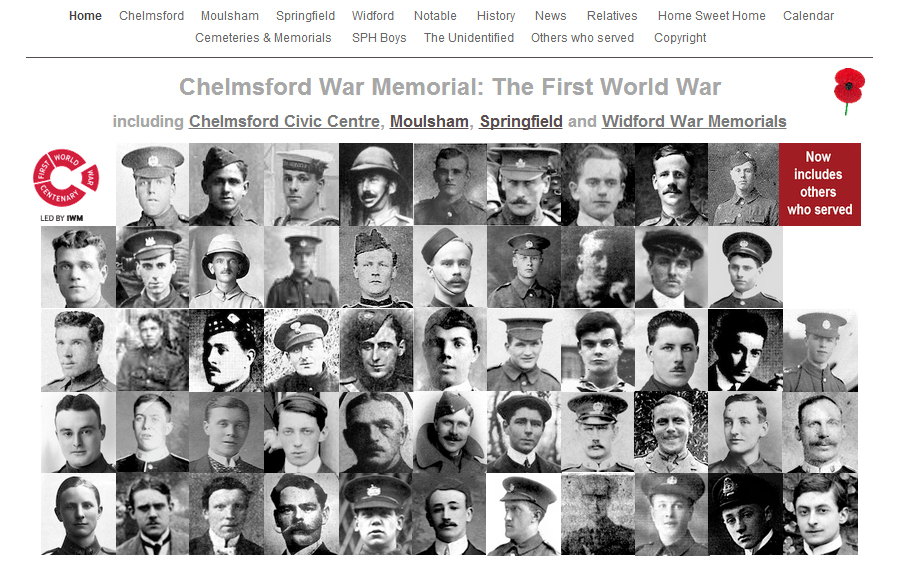 I think they expected me to respond by talking of the difficulty in researching the lives of the fallen so long after they died. Though that research can be time consuming, laborious, occasionally frustrating, yet often rewarding, I have found the biggest challenge has been the apparently simple task of determining whether a person should or should not be included on the website.
I think they expected me to respond by talking of the difficulty in researching the lives of the fallen so long after they died. Though that research can be time consuming, laborious, occasionally frustrating, yet often rewarding, I have found the biggest challenge has been the apparently simple task of determining whether a person should or should not be included on the website.
Early on in my research I was faced with a choice: should the website only commemorate those named on the Chelmsford Civic Centre war memorial, or should it include others that I had identified as having strong Chelmsford connections but who been omitted from that memorial?
I soon discovered that the process to select the names for the memorial had been imperfect. The draft list of names was issued as late as July 1923 to the public for comment upon, with the finalised list later determined by the Mayor and Town Clerk. That delay of almost five years after the end of the war meant that there was every chance that relatives or friends of some of those who could have been included on the memorial were no longer in a position to suggest their names.

Leading Seaman Samuel Allen Barnard, killed aged 26 when H.M.S. Vanguard blew up in 1917. Read his story here
My initial analysis also revealed that some of those named on the memorial had left Chelmsford several years before the war – some to settle in other parts of the country, and others who emigrated abroad, to Canada and Australia. They appeared not to have set foot in the town for some time, if at all, since their departure, yet their names were included on the memorial.
Having identified those potential shortcomings I decided I would include on the website all those mentioned on the war memorial plus those with a strong Chelmsford connection who had been omitted from the war memorial. I then just needed to determine what ’strong Chelmsford connection’ meant.
I looked to the past for clues.
Almost a century ago those erecting war memorials after the First World War had to determine their own inclusion/exclusion criteria, with the criteria varying from memorial to memorial. The Chelmsford approach seemed to be inconsistent, but maybe if I looked at other memorials I could identify best practice.
I soon established that war memorials that commemorated the war dead who attended a particular school, or church, or club, or place of work would have been fairly straightforward to compile names for – either the individual had attended or they had not.

Leading Mechanic Arthur Evan Thomas, R.A.F. Read his story here.
Other types of memorial would have been more challenging. Those that commemorated war dead of towns (and villages, parishes etc.) often used residency as the primary criteria for inclusion. Usually a person was included on such a memorial if they had been resident in the town at the time they began military service. They may also have been included if they died in the town as a consequence of their military service. Some war memorials broadened the residency scope wider than the individual; they may have included an individual on a town’s war memorial even if the individual did not reside in the town when they joined up or died, but their parents, spouse or next-of-kin siblings did, either at the time of them joining up or of their death. This broadening of scope means that some individuals’ names appeared on more than one war memorial – some of Chelmsford’s also appear on town and village war memorials in other parts the UK and further afield.
Even the boundary of a town can be difficult to determine. Chelmsford’s Civic Centre war memorial generally uses the Borough Boundary of 1923 but also includes residents from beyond. The 1923 Borough did not include parts of Widford which were added to the Borough in the 1930s. Great Baddow, Broomfield and Writtle were not absorbed in to the Borough until 1974.
Other criteria, beyond residency, may be considered when selecting names for a war memorial, including date of death, cause of death, and whether the individual was serving or had served in the military.

Corporal John William Hooker, 7th (Service) Battalion, Duke of Cornwall’s Light Infantry, killed in action in 1918. His brother, George Alexander Hooker, was also killed in the war. Read his story here.
Some war memorials restrict their commemorations to those that died or were killed between the war’s outbreak on 4th August 1914 and the Armistice of 11th November 1918. Others stretch that to the Treaty of Versailles of 28th June 1919 when peace with Germany officially started. For the First World War the Commonwealth War Graves Commission (CWGC) commemorates deaths from 4th August 1914 up to 31st August 1921. Others go beyond, recognising that the war led to wounds and illness that led to the deaths of servicemen for decades after the war. The last of those to die who is commemorated by Chelmsford’s Civic Centre war memorial is Douglas Havelock Newman, a former prisoner of war, who died on 7th May 1922, well past the CWGC cut-off date.
Some war memorials include only those who were killed in action or died of wounds. Others expand on that to include those that died of illness, accident or even suicide. The CWGC makes no distinction around causes of death when determining if a person should be commemorated. Chelmsford’s Civic Centre war memorial includes all of those except suicide, although two soldiers who committed suicide are buried in the town.
Some war memorials include only those who died whilst serving in the military. Others go beyond that to include ex-servicemen and civilians. The CWGC commemorates anyone who was still in military service or members of certain civilian organisation (such as the Red Cross) at the time of death, but also includes those who had left the military and died up to 31st August 1921 as a result of an injury or illness caused by or exacerbated by their service up to that date. The Chelmsford Civic Centre war memorial includes a member of the Red Cross, but it does not, and neither does the CWGC, include a civilian from Chelmsford, John Thomas Bannister, killed in a German air raid on London during the First World War.
Having pondered those factors I have ultimately come up with the following criteria which I employ to determine whether someone should be included on the website. You will see is not simple and certainly not as simple as I would have liked.
An individual will be recorded on the website where:
- They are mentioned on Chelmsford’s Civic Centre war memorial or the Moulsham, Springfield or Widford war memorials, or
- They or their assumed next of kin were resident in the Borough of Chelmsford of 1923 or parishes of Widford and Springfield at the time they began military service or at the time they were killed or died, or
- They died or were buried within those same areas, and;
- Their death is commemorated by the CWGC or their death is proven to have been as a result of an injury or illness caused by or exacerbated by their military service or enemy action.
Determining to what extent these criteria apply so long after an individual’s death is not always easy. We do not have comprehensive records of all those who served in the military nor of those who lived in Chelmsford. The 1914-15 and 1918 registers of electors provide some evidence which can be used, as do contemporary newspaper reports, cemetery and church records. Perhaps the greatest untapped source of information is the stories passed down through families and I hope that the war’s centenary will bring many of the latter to the fore.
If you would like to view the Chelmsford War Memorial website follow this link: http://www.chelmsfordwarmemorial.co.uk/Chelmsford_War_Memorial/Home.html
Andy will be giving a talk on some of the stories he has come across during his research at Essex at War: 1914-18 at Hylands House on Sunday 14 September. Click here for details.
‘And so the mad Dance of Death has begun’: a look at the Essex County Chronicle of 7 August 1914
As we mark the 100th anniversary of Britain’s entry into the First World War on 4 August 1914, we thought we would take a look back at the immediate reactions and concerns of Essex people to the outbreak of the war as portrayed in the Essex County Chronicle.
The first edition of the Chronicle to be published after the declaration of war was on 7 August. As well as giving us an insight into people’s thoughts on the war, the paper gives us an idea of the activities and occupations of people on the eve of the conflict.
A Bank Holiday had just passed, on which the Great Eastern Railway had conveyed 42,411 people to stations serving Epping Forest, and there had been shows and sports around the county. Essex’s status as an agricultural county is also evident; it was reported that Chelmsford was confirmed to be home to the third largest wheat market in the country, and Colchester the sixth largest. All was not well in the world of agriculture though; a farm labourers’ strike in north Essex had culminated in five haystacks being set alight in Steeple Bumpstead and Birdbrook in the weekend before the declaration of war.
All of these snippets of news, however, were overshadowed by news of the war, and speculation as to how Essex was going to be affected.
Views on the war
The paper explained briefly what had unfolded on the continent so far: the Archduke of Austria had been assassinated by ‘some mad youth said to be a member of one or other of the cut-throat Societies which abound in Servia’. The ensuing row between Austria and Serbia had escalated until Russia and Germany became involved, ‘and so the mad Dance of Death has begun’.
Some people clearly opposed the war entirely: ‘Sir Albert Spicer is among those who have expressed their willingness to give effective support to an organisation for insisting that this country shall take no part in a Continental war unless directly attacked.’
The overall impression given by the paper’s reporting on the war is that people were not happy about it, but they would do their duty. Under the heading ‘Armageddon’, one journalist described ‘the great black war cloud which [has] darkened the horizon’, and thought that everything had been done by Sir Edward Grey, the Foreign Secretary, to ‘avoid joining the titanic struggle’. Germany’s invasion of neutral Belgium, he believed, had left Britain no choice.
The mood in Essex was described as serious, but calm:
‘There is no panic, no mafficking, nor jingoism; a calm, serious resolve seems to pervade Essex, as indeed the whole country, to meet the terrible arbitrament of war cast upon us unflinchingly and with high courage, and there is a feeling that the sword must not be sheathed again until it is placed beyond the role of any one power to attempt or desire to dominate others.’
This is maybe not a totally accurate description of the prevailing mood, as the paper also reports on fears of a German invasion and on people hoarding food.
Fear of invasion
There was instantly some discussion in Essex about the possibility of a German invasion of England. The Mayor of Maldon, Alderman Krohn, was reported as saying that ‘it was practically certain that if the enemy did effect a landing at all, it would be on the Essex coast. That view is general, and it goes without saying that the authorities are prepared’. The idea that the authorities were prepared for a German invasion in August 1914 is not borne out by other sources, but that’s for another blog post.
Food hoarding and profiteering
One of the principal concerns in Essex on the outbreak of war seems to have been the hoarding of food and profiteering. The page giving news of the war is dominated by a large notice at its head:
‘In view of the great national emergency all sections of our people must stand together. Not only those in the fighting line, but those who are left to carry on the business of the nation have a duty to perform. There should be no scares, no attempt to corner the necessaries of life, no private hoarding of supplies, no waste in any shape or form. Suffering there must, unhappily, be. Let everyone do his part to minimise it.’
Food supplies are also mentioned in another segment on the page:
‘One of the outcomes of the outbreak of war between this country and Germany, is that prices of food have increased. Some traders – and to the honour of traders generally the number is not large – have rushed up prices to almost a famine standard. But the public are largely to blame for this, because they have with unnecessary panic, not unaccompanied by selfishness, bought heavily of the necessaries of life, without the least thought for others.’
Mr. J.J. Crowe, Chairman of Brentwood Urban Council, had commented that ‘Such wholesale buying of food and rushing to the bank … are not only unpatriotic but wicked’.
In the meantime, the Government had issued an assurance that there was no immediate danger of a food shortage; the German fleet was blockaded in the North Sea, and not in a position to interrupt the main routes through which British food supplies passed.
Looking back to the past
Just as we look back to the past of 100 years ago, so did the people of 1914. The Chronicle of 7 August included mention of a Mrs Brooks of Downham, apparently still going strong at the age of 102.
Mrs Brooks was distinguished by more than just her age:
‘Few people are alive now who can remember seeing Napoleon, but this lady has the dual distinction of having both seen the great Bonaparte and been spoken to by his conqueror, the Duke of Wellington.’
Mrs Brooks was born in Plymouth, and as a 3 ½ year old was taken by her father to see Napoleon as a prisoner on board the Bellerophon before he was taken to St Helena. When she was 17, she briefly met Wellington while visiting the Hon. Mrs Cotton, daughter of Lord Combermere.
‘It is no small coincidence that this venerable lady should have been born in the turmoil of a struggle which paralysed all Europe and should live to see the beginning of another which promises to be no less titanic.’
All images reproduced courtesy of the Essex Chronicle
To find out more about First World War records at ERO, join us at the following:
Discover: First World War records at ERO, Wednesday 6 August, 2.30pm-4.30pm (details here)
A Righteous Conflict: Essex people interpret the Great War – A talk for the Essex History Group by Paul Rusiecki, Tuesday 2 September, 10.30am-11.30am, free, no need to book
Essex at War, 1914-1918, a day of events at Hylands House, Sunday 14 September (details here)
Document of the Month, August 2014: Prince of Wales’ National Relief Fund, Colchester Branch, minutes
Each month a document is put on display in our Searchroom. Our document for July has been chosen by Archivist Katharine Schofield to look at first responses in Essex to the outbreak of the First World War in August 1914.
D/B 6 M29/1
The Great War began on 4 August 1914, one hundred years ago this month. On the eve of war, the Foreign Secretary Sir Edward Grey reportedly said, ‘The lamps are going out all over Europe, we shall not see them lit again in our life time’. On 4 August Germany invaded Belgium as part of the Schlieffen Plan to capture Paris quickly by attacking through neutral countries. As one of the guarantors of Belgian neutrality under the Treaty of London in 1839, Britain declared war on Germany.
The most pressing need was to bring the army up to strength, and the Reserves were called up immediately, often causing hardship to their families who were dependent on their wages. As representatives of a garrison town the governing body of Colchester were particularly aware of the possible difficulties and on 5 August set up a committee ‘to consider what steps can be taken for alleviating the distress likely to be felt by the wives and families of men called on Active Service and of those losing their regular employment owing to dislocation of trade’.

One of the Committee’s resolutions at their first meeting on 5 August, the day after war was declared, was to ask the Mayor to issue a handbill asking people not to panic buy
On 7 August the Prince of Wales appealed in The Times for money to establish a national fund to relieve distress among the families of reservists. By midnight £250,000 had been raised and within a week £1 million. On 10 August Colchester voted to make their committee the Colchester Branch of the National Relief Fund.
The minutes for 10 August record offers of help from local residents. These ranged from making clothes, the services of the Boy Scouts and Girl Guides, to nursing by the local Convent and a number of ladies, including of German soldiers if required. Mrs Francis offered to establish a ward in a large room off Maldon Road, the local MP placed at the disposal of the Committee 200 duck, and a list of workmen discharged ‘on account of slackness of trade’ was to be compiled.
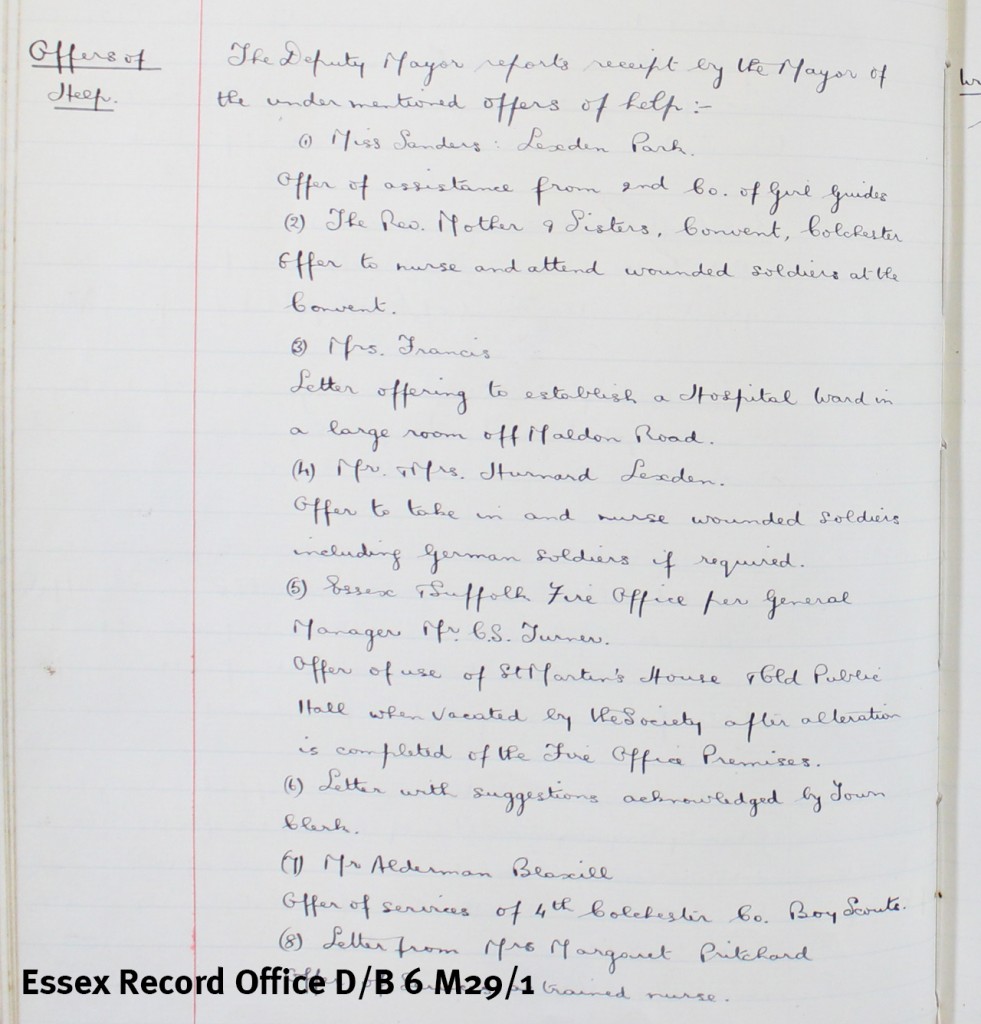
Offers of help from residents in Colchester received by 10 August 1914, including the services of the 4th Colchester Boy Scouts and the 2nd Colchester Girl Guides
The minute book will be on display in the Searchroom throughout August.
If you would like to find out more about First World War records at ERO, join us at our next Discover: First World War records at ERO workshop on 6 August 2014. This workshop talks you through some of the fascinating wartime records that we hold here, and also looks at how to research names on local war memorials, or to trace your First World War Ancestors. Tickets are £10 and can be booked by telephoning 01245 244644.
First World War centenary – useful resources
2014 will, of course, mark the centenary of the outbreak of the First World War.
The ERO’s collections contain a great deal of material relating to the First World War that tell us about life in Essex during the War years, and the experiences of Essex people service abroad. We will be using this blog over the year to highlight particular stories, so watch this space for those.
We are also planning a special event later in the year to mark the centenary – further details will be coming soon.
In the meantime, we thought it would be useful to bring together a range of resources that researchers might find useful for family history, local history, and community projects, both at the ERO and elsewhere.
Essex Record Office resources
You can of course search Seax, our online catalogue, to begin your research. A video tutorial on how to use Seax is available here.
Surviving First World War service and pension records and medal roll indexes are available on Ancestry, which can be accessed for free in the ERO Searchroom or at your local Essex Library
ERO First World War source list
Essex Sound and Video Archive sources on the First World War
Paul Rusiecki’s book The Impact of Catastrophe: The People of Essex and the First World War (1914-1920) is an essential companion for anyone interested in Essex during the War years, and is available to purchase from the ERO Searchroom, by e-mailing ero.enquriry@essex.gov.uk
We are in the process of compiling a session for schools on Essex during WWI – if you would like to book a session please e-mail ero.events@essex.gov.uk
Resources for Essex
Now the Last Poppy has Fallen project
Now the Last Poppy Has Fallen is a project funded by the Heritage Lottery Fund and Essex County Council which will focus on the lives of individuals, families and communities in Essex during the First World War. The ERO is taking part along with 6 Essex museums, and the project will be producing a travelling exhibition as well as working with schools. You can follow the project on:
Blog, Facebook, Twitter, Pinterest
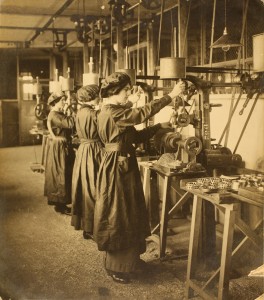
Women working at Hoffmann’s ball bearings factory in Chelmsford, 1914 (Frederick Roberts Collection, Anglia Ruskin University, held at ERO)
Essex Regiment Museum
The Essex Regiment Museum in Oaklands Park, Chelmsford, tells the story of the Essex Regiment and the Essex Yeomanry.
East Anglian Film Archive
The East Anglian Film Archive has 200 hours of film footage online, including some fascinating pieces relating to the First World War, such as the following:
Zeppelins over East Anglia (watch from 18:30 for segment on Essex)
Women at work on a farm in Willingale, 1916
A roll of honour of men from Braintree who served in WWI
Presentation of a tank to Chelmsford, 1919
Chelmsford War Memorials
The Chelmsford War Memorials site details biographical information of the men included in Chelmsford’s war memorials, and is a really fabulous resource if you are interested in Chelmsford, or any of the men on the memorials.
Essex Branch of the Western Front Association
The Western Front Association was formed to further interest in the Great War and to perpetuate the memory, courage and comradeship of those who served on all sides. The Essex Branch of the Association has a whole programme of talks which will be running in 2014 which can be found here.
Resources for the United Kingdom
Imperial War Museum online resources
www.1914.org is the IWM’s centenary site which highlights events and resources from across the world. If you are running a project or event of your own relating to the centenary you can join the website as a partner and add your event. As a partner you will also have access to a tremendous range of resources that the IWM has compiled to help you with your project. You can also follow the First World War Centenary on Facebook and Twitter.
Lives of the First World War is the IWM’s major WWI online project, bringing together material from museums, libraries, archives and family collections from across the world together in one place. IWM wants your help to explore these documents, link them together and start telling the stories of those who served in uniform and worked on the home front.
Voices of the First World War allows you to hear about the First World War from those who were there, using recordings from the IWM’s sound collection. The podcasts can be listened to on the link above, or downloaded from iTunes, and include everyone from soldiers, sailors and airmen to munitions workers, schoolchildren and ambulance drivers.
Faces of the First World War is a set of photographs of WWI servicemen on IWM’s Flickr pages. These images are some of the first items collected by the IWM; in some cases, bereaved families donated their only family of their lost loved one. Some have only a name, rank and unit, so the IWM is asking for help from people to add information to the photographs.
The IWM is also in the process of transforming its First World War galleries to reopen in July 2014 – more here
The National Archives
Advice from TNA on First World War records
Soldiers’ wills
Search for soldiers’ wills on a database on gov.uk
Read more about the digitisation project here
Wales in WWI
Find out about the Welsh experience of the First World War on www.cymru1914.org; this project has conducted mass digitisation of primary sources relating to the First World War from the Libraries, Special Collections and Archives of Wales
Great War Nurses blog
The Great War Nurses blog contains lots of information about women who served as military nurses from the Boer War through to the end of the First World War
The same author also writes about military hospitals and the Army Nursing Service.
Further afield
The Commonwealth War Graves Commission website includes a database which lists the names and place of commemoration of the 1.7 million men and women of the Commonwealth forces who died during the two world wars.
Centenary News provides independent, impartial and international coverage of the First World War Centenary and Centennial 2014-2018.
Europeana is running a Europe-wide project to collect pictures, letters, postcards, souvenirs of other items relating to WWI. You can add your own stories, perhaps from family papers or photographs, or explore stories contributed by others.
Putting Art on the Map – a joint project between the Imperial War Museum and HistoryPin focusing on First World War artworks (PS, HistoryPin is a wonderful resource for sharing and exploring historic images – you can upload pictures and virtually ‘pin’ them to a map, and explore what others have pinned)
This list is by no means exhaustive, so if you have any other suggestions that you think researchers – especially those interested in Essex – would find useful, please let us know leaving a comment or e-mailing us.
If you do undertake research into the First World War using ERO’s collections we would love to hear from you.

